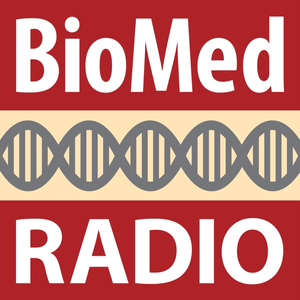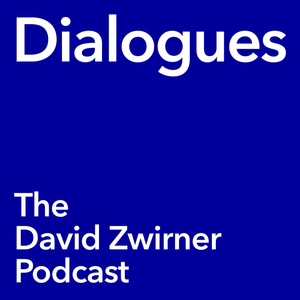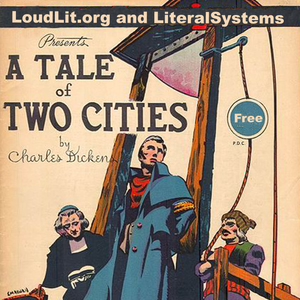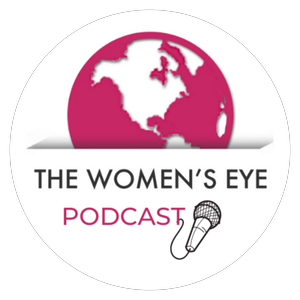
Drug company money and retina drug use
07/20/16 • 2 min
A new study reveals that some eye specialists who receive money from pharmaceutical companies are more likely to use drugs promoted by those companies than similar drugs that are equally effective but less expensive. Although the data cant confirm a cause and effect between money from industry and the prescribing habits of some physicians, researchers at Washington University School of Medicine in St. Louis report in the journal JAMA Ophthalmology that they have identified a positive association between reported pharmaceutical payments and increased use of drugs prescribed to treat several retinal problems. AN ANALYSIS OF RECORDS MADE PUBLIC BY THE U.S. PHYSICIANS PAYMENTS SUNSHINE ACT, SHOWS THAT THERE IS AN ASSOCIATION BETWEEN REPORTED PAYMENTS FROM PHARMACEUTICAL COMPANIES AND THE DRUGS THAT SOME RETINA SPECIALISTS USE IN THEIR PATIENTS WHO HAVE MACULAR DEGENERATION AND OTHER RETINAL DISEASES. OPHTHALMOLOGY RESEARCHERS AT WASHINGTON UNIVERSITY SCHOOL OF MEDICINE IN ST. LOUIS IDENTIFIED THAT ASSOCIATION CRUNCHING NUMBERS FROM 2013, THE MOST RECENT YEAR FOR WHICH THE INFORMATION IS AVAILABLE. JIM DRYDEN HAS MORE
THE ABILITY TO ASSOCIATE PAYMENTS FROM PHARMACEUTICAL COMPANIES WITH THE DRUGS THAT DOCTORS ACTUALLY PRESCRIBE PROVIDED RESEARCHERS WITH AN OPPORTUNITY TO LOOK FOR CONNECTIONS. THE RESEARCH TEAM MAKES IT CLEAR THAT THEY CANT IDENTIFY A CAUSE-AND-EFFECT RELATIONSHIP BETWEEN DRUG COMPANY PAYMENTS AND THE RETINAL THERAPIES SOME DOCTORS USE, BUT THEY DO FIND AN ASSOCIATION. WASHINGTON UNIVERSITY RETINA SPECIALIST RAJ APTE SAYS HISTORICALLY, DOCTORS LIKE HIM HAD ONE DRUG THAT WORKED PRETTY WELL, KNOWN AS AN ANTI-VEGF AGENT, THAT THEY COULD INJECT TO TREAT SEVERAL RETINAL DISEASES. APTE SAYS ALTHOUGH IT WORKED WELL, IT WAS NOT FDA-APPROVED FOR USE IN THE EYE. THEN, A FEW YEARS LATER, TWO OTHER DRUGS WERE INTRODUCED, AND THOSE MEDICATIONS DID GET FDA APPROVAL. ALL THREE DRUGS ARE ABOUT EQUALLY EFFECTIVE, BUT WHEN THE LATTER TWO CAME TO THE MARKET, THEY WERE HEAVILY PROMOTED. APTE SAYS THAT HISTORY ALLOWED HIS TEAM TO LOOK AT A UNIQUE INTERACTION.
(act) :15 o/c conditions, off-label
The utilization of medications that are approved by the FDA and promoted by industry, versus a medication that is not approved by the FDA but also used extensively for the same conditions, off-label.
APTES TEAM FOUND THAT THE TWO NEWER, FDA-APPROVED DRUGS, CALLED RANIBIZUMAB AND AFLIBERCEPT, WERE USED MORE OFTEN BY DOCTORS WHO GOT PAYMENTS FROM THE DRUG COMPANIES THAN THE OLDER DRUG, BEVACIZUMAB.
(act) :15 o/c not promoted
What we found was a positive association between payments from pharmaceutical companies and usage of the two promoted medications, which also happen to be FDA-approved, compared to the medication, bevacizumab, thats not FDA-approved and not promoted.
APTES TEAM ALSO FOUND THAT THE DRUG COMPANIES DIDNT HAVE TO PAY OUT VERY MUCH.
(act) :19 o/c the association
And this is not just us. Its been shown before, in other studies, that its not the dollar amount. Its really the interaction between the provider and the industry that influenced it. There was an increase, but it really was the fact that there was an interaction that would influence the association.
THE STUDY DOES NOTE THAT THE NEWER, PROMOTED DRUGS COST OVER $1900 PER DOSE, WHILE THE OLDER, OFF-LABEL DRUG COSTS ABOUT $60 PER DOSE, BUT APTE SAYS IT ISNT POSSIBLE WITH THESE NUMBERS TO IDENTIFY A CAUSE-AND- EFFECT RELATIONSHIP BETWEEN PAYMENTS AND USE OF THE DRUGS.
(act) :28 o/c good start
And I think as we start collecting data, five and 10 years from now, you know this is going to become more clear, and well get more sophisticated metrics and an understanding of what this means. And so, Im really not willing to make any conclusions about causality because I just dont know if our data truly says that. If five years from now, you know, more robust data shows us that, then we would be able to say something. But I think right now, this is a good start.
APTES TEAM REPORTS ITS FINDINGS IN THE JOURNAL JAMA OPHTHALMOLOGY. IM JIM DRYDEN...
RUNS 2:55
A new study reveals that some eye specialists who receive money from pharmaceutical companies are more likely to use drugs promoted by those companies than similar drugs that are equally effective but less expensive. Although the data cant confirm a cause and effect between money from industry and the prescribing habits of some physicians, researchers at Washington University School of Medicine in St. Louis report in the journal JAMA Ophthalmology that they have identified a positive association between reported pharmaceutical payments and increased use of drugs prescribed to treat several retinal problems. AN ANALYSIS OF RECORDS MADE PUBLIC BY THE U.S. PHYSICIANS PAYMENTS SUNSHINE ACT, SHOWS THAT THERE IS AN ASSOCIATION BETWEEN REPORTED PAYMENTS FROM PHARMACEUTICAL COMPANIES AND THE DRUGS THAT SOME RETINA SPECIALISTS USE IN THEIR PATIENTS WHO HAVE MACULAR DEGENERATION AND OTHER RETINAL DISEASES. OPHTHALMOLOGY RESEARCHERS AT WASHINGTON UNIVERSITY SCHOOL OF MEDICINE IN ST. LOUIS IDENTIFIED THAT ASSOCIATION CRUNCHING NUMBERS FROM 2013, THE MOST RECENT YEAR FOR WHICH THE INFORMATION IS AVAILABLE. JIM DRYDEN HAS MORE
THE ABILITY TO ASSOCIATE PAYMENTS FROM PHARMACEUTICAL COMPANIES WITH THE DRUGS THAT DOCTORS ACTUALLY PRESCRIBE PROVIDED RESEARCHERS WITH AN OPPORTUNITY TO LOOK FOR CONNECTIONS. THE RESEARCH TEAM MAKES IT CLEAR THAT THEY CANT IDENTIFY A CAUSE-AND-EFFECT RELATIONSHIP BETWEEN DRUG COMPANY PAYMENTS AND THE RETINAL THERAPIES SOME DOCTORS USE, BUT THEY DO FIND AN ASSOCIATION. WASHINGTON UNIVERSITY RETINA SPECIALIST RAJ APTE SAYS HISTORICALLY, DOCTORS LIKE HIM HAD ONE DRUG THAT WORKED PRETTY WELL, KNOWN AS AN ANTI-VEGF AGENT, THAT THEY COULD INJECT TO TREAT SEVERAL RETINAL DISEASES. APTE SAYS ALTHOUGH IT WORKED WELL, IT WAS NOT FDA-APPROVED FOR USE IN THE EYE. THEN, A FEW YEARS LATER, TWO OTHER DRUGS WERE INTRODUCED, AND THOSE MEDICATIONS DID GET FDA APPROVAL. ALL THREE DRUGS ARE ABOUT EQUALLY EFFECTIVE, BUT WHEN THE LATTER TWO CAME TO THE MARKET, THEY WERE HEAVILY PROMOTED. APTE SAYS THAT HISTORY ALLOWED HIS TEAM TO LOOK AT A UNIQUE INTERACTION.
(act) :15 o/c conditions, off-label
The utilization of medications that are approved by the FDA and promoted by industry, versus a medication that is not approved by the FDA but also used extensively for the same conditions, off-label.
APTES TEAM FOUND THAT THE TWO NEWER, FDA-APPROVED DRUGS, CALLED RANIBIZUMAB AND AFLIBERCEPT, WERE USED MORE OFTEN BY DOCTORS WHO GOT PAYMENTS FROM THE DRUG COMPANIES THAN THE OLDER DRUG, BEVACIZUMAB.
(act) :15 o/c not promoted
What we found was a positive association between payments from pharmaceutical companies and usage of the two promoted medications, which also happen to be FDA-approved, compared to the medication, bevacizumab, thats not FDA-approved and not promoted.
APTES TEAM ALSO FOUND THAT THE DRUG COMPANIES DIDNT HAVE TO PAY OUT VERY MUCH.
(act) :19 o/c the association
And this is not just us. Its been shown before, in other studies, that its not the dollar amount. Its really the interaction between the provider and the industry that influenced it. There was an increase, but it really was the fact that there was an interaction that would influence the association.
THE STUDY DOES NOTE THAT THE NEWER, PROMOTED DRUGS COST OVER $1900 PER DOSE, WHILE THE OLDER, OFF-LABEL DRUG COSTS ABOUT $60 PER DOSE, BUT APTE SAYS IT ISNT POSSIBLE WITH THESE NUMBERS TO IDENTIFY A CAUSE-AND- EFFECT RELATIONSHIP BETWEEN PAYMENTS AND USE OF THE DRUGS.
(act) :28 o/c good start
And I think as we start collecting data, five and 10 years from now, you know this is going to become more clear, and well get more sophisticated metrics and an understanding of what this means. And so, Im really not willing to make any conclusions about causality because I just dont know if our data truly says that. If five years from now, you know, more robust data shows us that, then we would be able to say something. But I think right now, this is a good start.
APTES TEAM REPORTS ITS FINDINGS IN THE JOURNAL JAMA OPHTHALMOLOGY. IM JIM DRYDEN...
RUNS 2:55
Previous Episode

Itch pathways and TRP channels
Researchers have found how sensory nerve cells work together to transmit itch signals from the skin to the spinal cord, where neurons then carry those signals to the brain. Their discovery may explain why some people experience various types of itching, including chronic itching, and help scientists find ways to make some types of itching stop. The researchers report that by interfering with the activity of sensory neurons, they may be able to inhibit multiple types of itching.
THERE ARE SPECIFIC NEURONS IN THE SPINAL CORD THAT CARRY ITCH SIGNALS TO THE BRAIN, BUT BEFORE THOSE CELLS CAN BE ACTIVATED, OTHER SENSORY CELLS MUST PROCESS AND TRANSMIT ITCH SIGNALS. NOW, RESEARCHERS AT WASHINGTON UNIVERSITY SCHOOL OF MEDICINE IN ST. LOUIS HAVE IDENTIFIED CHANNELS IN NERVE CELLS THAT CARRY DIFFERENT TYPES OF ITCH SIGNALS TO THE SPINAL CORD. AND THE FINDINGS MAY GIVE SCIENTISTS NEW TARGETS TO HELP BLOCK OR RELIEVE ITCHING IN SOME PATIENTS. JIM DRYDEN HAS MORE
THE RESEARCHERS STUDIED HOW ITCH SIGNALS ARE PROCESSED IN THE DORSAL ROOT GANGLION. THATS A CLUSTER OF NERVE CELLS THAT CARRIES SIGNALS FROM THE SKIN TO THE SPINAL CORD. ZHOU-FENG CHEN, DIRECTOR OF WASHINGTON UNIVERSITYS CENTER FOR THE STUDY OF ITCH, SAYS THERE WERE TWO CALCIUM CHANNELS IN THE CELLS IN THAT STRUCTURE THAT WERE KNOWN TO BE INVOLVED IN TRANSMITTING DIFFERENT TYPES OF ITCH KNOWN AS HISTAMINE-INDUCED ITCH, WHICH IS THE TYPE OF ITCHING THAT CAN BE TREATED WITH ANTIHISTAMINES LIKE BENADRYL, AND CHLOROQUINE-INDUCED ITCH, WHICH OFTEN EFFECTS PEOPLE WHO TAKE THE DRUG CHLOROQUINE FOR MALARIA. CHEN SAYS CALCIUM CHANNELS IN NERVE CELLS CALLED TRPV1 AND TRPA1 PROCESS THOSE ITCH SIGNALS.
(act) :20 o/c of histamine
TRPV1 is required for histamine, a very important itch mediator. And TRPA1 is very important for chloroquine-mediated itch. So these two types of itch are very different because chloroquine- mediated itch is independent of histamine.
MEANING THAT ANTIHISTAMINES DONT DO MUCH FOR PATIENTS WITH CHLOROQUINE-INDUCED ITCHING. BUT, STUDYING MICE, CHEN FOUND THAT A THIRD CALCIUM CHANNEL, CALLED TRPV4, ALSO WAS REQUIRED FOR CHLOROQUINE-INDUCED ITCH.
(act) :12 o/c itch sensations
Not only that. We also found TRPV4 also is required for histamine. So, therefore, here you have one channel mediating two types of very distinct itch sensations.
HE SAYS IT APPEARS THERES SOME CROSS-TALK BETWEEN THESE ITCH-PROCESSING CHANNELS IN THE NERVE CELLS.
(act) :24 o/c is surprising
There are so many TRP channels co-expressed in sensory neurons, and theres lots of cross-talk, but then, there are really no studies of behavior, physiologically relevant studies to show this kind of two TRP channels in a sensory cell may cross-talk to relay each specific type of itch. So this is surprising.
AND CHEN SAYS THE SURPRISING DISCOVERY OF CROSS TALK BETWEEN THE THE V4 CHANNEL AND THE OTHER, PREVIOUSLY DISCOVERED ITCH-TRANSMITTING CHANNELS MEANS THAT SCIENTISTS AND DRUG MAKERS MAY HAVE ANOTHER TARGET THAT COULD BE USED TO BLOCK MULTIPLE TYPES OF ITCH SIGNALS.
(act) :13 o/c additional target
V4 is an important target, for both histamine-induced itch and for chloroquine-induced itch. Our data suggest that its probably a very important channel for the chloroquine itch, so you have an additional target.
CHEN AND HIS COLLEAGUES REPORT THEIR FINDINGS IN THE JOURNAL SCIENCE SIGNALING. IM JIM DRYDEN...
RUNS 2:38
Next Episode

Grandma study
In search of genetic clues regarding autism spectrum disorder, researchers at Washington University School of Medicine in St. Louis are launching a study focused on grandmothers. Autism has a strong genetic basis, and rates of the disorder may be higher in the grandchildren of women who had at least one child with an autism spectrum disorder than in the population as a whole. To test that hypothesis, the researchers plan to recruit a minimum of 500 grandmothers and soon-to-be grandmothers to complete questionnaires about their own children with autism, their other biological children and their biological grandchildren. The researchers want to better understand how to support families and help them understand the odds that some of their children may inherit the disorder.
AUTISM SPECTRUM DISORDERS HAVE A STRONG GENETIC COMPONENT, AND RESEARCHERS AT WASHINGTON UNIVERSITY SCHOOL OF MEDICINE IN ST. LOUIS ARE SURVEYING GRANDMOTHERS TO FIND OUT MORE ABOUT HOW ITS PASSED DOWN IN FAMILIES. THE RESEARCHERS ARE RECRUITING WOMEN WHO HAD AT LEAST ONE CHILD WITH AUTISM, AND WHO NOW HAVE GRANDCHILDREN, TO SEE HOW RISK FOR THE DISORDER MAY BE PASSED THROUGH THE GENERATIONS. JIM DRYDEN HAS MORE
ALTHOUGH PEOPLE WITH SERIOUS AUTISM SPECTRUM DISORDER DONT OFTEN HAVE CHILDREN THEMSELVES, SCIENTISTS KNOW THAT GENETICS PLAYS A BIG ROLE IN THE DISORDER. CURRENTLY, EXPERTS ESTIMATE THAT ABOUT ONE IN 68 CHILDREN WILL BE BORN WITH AN AUTISM SPECTRUM DISORDER. TO LEARN ABOUT GENETIC RISKS, RESEARCHERS HAVE STUDIED PARENTS AND SIBLINGS OF THE KIDS WHO HAVE THE DISORDER, AND NOW, THEYRE RECRUITING GRANDMOTHERS TO LEARN EVEN MORE. WASHINGTON UNIVERSITY CHILD PSYCHIATRIST NATASHA MARRUS.
(act) :18 o/c biological grandmothers
The project is called the Second Generation Survey Project. Were recruiting women who are the biological mothers of a child with an autism spectrum disorder, but who also have other children, who themselves did not necessarily have autism, and who now are biological grandmothers.
THE HYPOTHESIS IS THAT IN FAMILIES WHERE AT LEAST ONE CHILD HAD AN AUTISM SPECTRUM DISORDER, THERE MAY BE A GREATER RISK OF AUTISM IN SUBSEQUENT GENERATIONS, EVEN IF THE PARENTS OF THOSE CHILDREN ARENT THE FAMILY MEMBERS WHO HAD BEEN DIAGNOSED WITH AUTISM. BY SURVEYING GRANDMOTHERS ABOUT THEIR GRANDKIDS, MARRUS AND HER COLLEAGUES HOPE TO LEARN WHETHER THAT THATS TRUE.
(act) :11 o/c be there
Were curious to see what is the prevalence of autism in that next generation so that we can better understand how to support families, so they understand the risk that may be there.
ONE KEY ASPECT OF AUTISM IS THAT ALTHOUGH THE INCIDENCE OF DISORDERS SEEMS TO BE INCREASING THROUGHOUT THE POPULATION, THE PROBLEM IS STILL MUCH MORE LIKELY TO AFFECT BOYS THAN GIRLS. HOWEVER, GIRLS WITH A FAMILY HISTORY OF AUTISM MAY STILL BE AT A HIGHER RISK OF HAVING A CHILD OF THEIR OWN WHO HAS AUTISM.
(act) :18 o/c general population
Girls, as many people know, are less likely to develop autism themselves, however, its thought that they may carry the genetic susceptibility to autism, which could then be passed on, to male children in particular, at rates higher than would be expected in the general population.
AND SHE SAYS ALTHOUGH THERE ARE SOME ENVIRONMENTAL RISK FACTORS, AUTISM SPECTRUM DISORDER MAINLY IS INHERITED.
(act) :12 o/c in families
So there is a strong genetic basis for autism this isnt to say that the environment doesnt matter, but a lot of what contributes to autism is thought to be in genes which, therefore, means that it can run in families.
MARRUS SAYS MANY RESEARCHERS BELIEVE AUTISM RISK CAN BE MASKED, PARTICULARLY IN GIRLS, AND THEN PASSED ON WHEN THOSE GIRLS GROW UP AND HAVE KIDS OF THEIR OWN.
(act) :20 o/c as treatments
One of the very active areas of research is to figure out what the level of this risk is and the biology that underlies this risk because if we understand the biology that protects girls from autism, then we might get some insights and clues into markers that could help with diagnoses, as well as treatments.
ONE WAY TO FIGURE THAT OUT, SAYS MARRUS, IS TO ASK GRANDMOTHERS TO HELP EVALUATE THEIR GRANDKIDS, AND THATS WHAT THE RESEARCH TEAM IS DOING, RECRUITING AT LEAST 500 GRANDMOTHERS WHO HAD AT LEAST ONE CHILD WHO HAD AUTISM. IM JIM DRYDEN...
RUNS 2:53
If you like this episode you’ll love
Episode Comments
Generate a badge
Get a badge for your website that links back to this episode
<a href="https://goodpods.com/podcasts/biomed-radio-washington-university-school-of-medicine-in-st-louis-130912/drug-company-money-and-retina-drug-use-6471641"> <img src="https://storage.googleapis.com/goodpods-images-bucket/badges/generic-badge-1.svg" alt="listen to drug company money and retina drug use on goodpods" style="width: 225px" /> </a>
Copy




